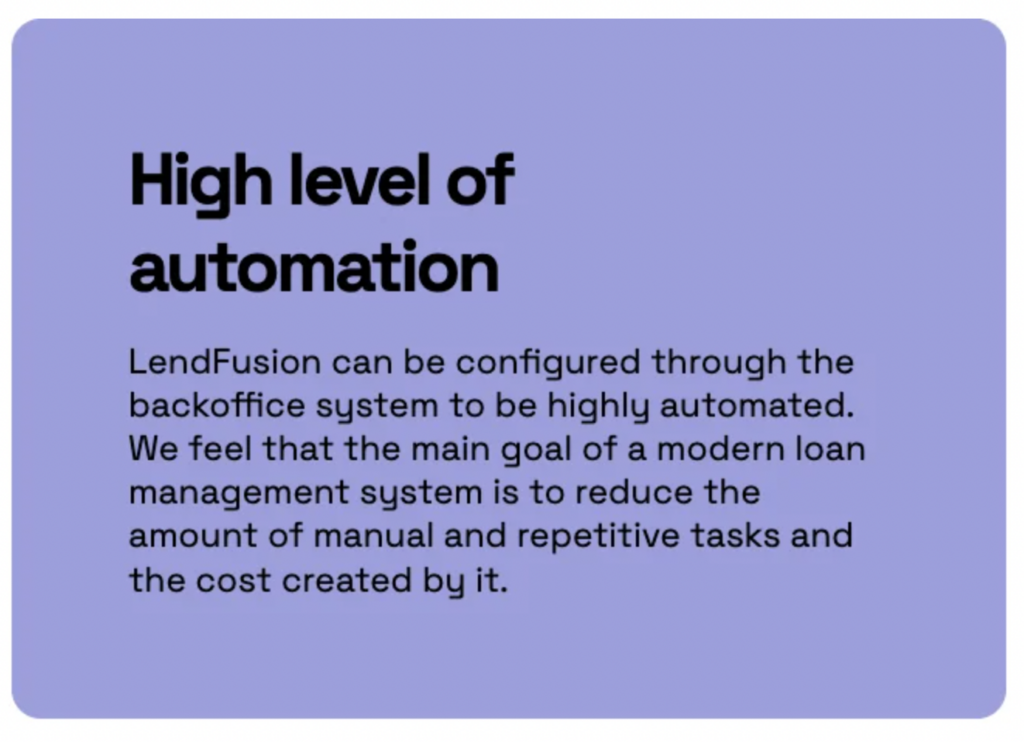Stay Clear of Failure: 3 Mistakes to Avoid When Implementing Loan Management Software

Staying ahead in the lending industry means embracing technology.
Starting the process of integrating loan management software can bring about several challenges, including issues like data being transferred incorrectly and not providing enough training for your team.
These problems can seriously affect how well the software is put to use.
We’ve put together an article that highlights the key mistakes you should steer clear of during this process, aiming to make the transition as smooth and effective as possible.
This guide is tailored for leaders of lending companies, breaking down complex ideas into clear, actionable steps and best practices to ensure your software setup is successful.
Understanding these common mistakes can make a big difference in how efficiently you can move to your new loan management system, making sure you get the most out of your investment.
This means smoother operations, better handling of risks, and a solid base for your company’s growth.
With the right preparation, loan management software can be a significant step forward for your lending business.
Identifying and Addressing Common Implementation Challenges
The first step to implementing loan management software is being aware of potential obstacles.
Common pitfalls such as inadequate training, insufficient customization, and communication gaps with the software provider can cause a delay in the implementation process.
Addressing these key areas from the beginning can help avoid common pitfalls and pave the way for successful implementation.
It’s important to remember that every lending business has unique needs and requirements.
Therefore, a one-size-fits-all approach may not always work.
This is where the role of the implementation team becomes crucial. The team needs to ensure that the software is not only effectively customized to fit the business needs but also that the users are well trained to leverage the software to its full potential.
Inadequate Training
Training plays a vital role in the successful implementation of loan management software. It’s not just about learning how to use the software; the training should include an understanding of the benefits of loan management software, the rationale behind the shift and the importance of data security.
The implementation team must conduct exhaustive testing to identify and rectify potential issues before rolling out the software widely.
This approach encourages personal accountability among lenders for their roles within the new software, promoting faster adaptation and return on investment.
Insufficient Customization
Every lending business has unique operational processes and needs.
Therefore, loan management software must be customized to align with these specific requirements. A generic, one-size-fits-all software often falls short as it may not cater to the unique requirements of a lender.
On the other hand, a high level of customization empowers lenders with more control over their data, operations, and security protocols, leading to a more efficient and effective loan management process.

This is why it’s crucial to opt for a free demo before making a final decision.
Communication with Software Provider
Another common pitfall to avoid is communication gaps with the software provider.
Establishing strong lines of communication from the start ensures aligned expectations regarding milestones and deliverables. Having a clear and consistent use of terminology among all team members and the software provider is essential for effective communication and understanding.
In addition, forming an implementation team with clearly defined roles can smooth the transition and facilitate effective vendor communication.
Streamlining Loan Origination and Servicing Processes
Loan management software (LMS), also known as lending software, can transform your business when it comes to streamlining the lending process, loan origination, and loan servicing processes.
With the help of a loan origination system and loan servicing software, this platform enables borrowers to apply online, submit documents electronically, and receive instant decisions – making the entire loan application process seamless and efficient – regardless of the types of loans you provide.

But that’s not all.
An LMS also provides:
- Automated loan processing
- Enhanced verification
- Addressing challenges related to human errors
- Maintaining competitiveness in the lending business
- Optimizes income verification
- Evaluation of borrowers’ financial well-being
- Risk evaluation
So, it’s important you choose the right software for your business!
All of these features significantly improve the operational efficiency of the loan origination process.
Furthermore, the software ensures borrowers receive accurate information for effective financial planning by accurately tracking and updating information like interest rates and payment schedules.
Reducing Human Errors
Tackling human errors is one of the most significant benefits of implementing loan management software. The software incorporates user-friendly interfaces and smart pre-built application forms which minimize manual errors during data entry.
Automation significantly improves accuracy in loan processing by eliminating human errors and producing error-free work. For instance, automated underwriting enhances accuracy in credit assessments by analyzing borrower data with advanced algorithms.

Improving Operational Efficiency
Operational efficiency is another area where loan management software can make a significant difference. For example, automated underwriting and processing capabilities enhance data accuracy and speed up decision-making.

Such automation leads to more consistent and structured workflows, streamlining various tasks such as:
- data entry
- document collection
- routing
- task assignments
- processing tasks for lenders
By eliminating manual processes, efficiency and accuracy are significantly improved.
It’s no wonder that automating processes is the number one priority over the short-mid term for global businesses.
Enhancing Customer Satisfaction
Customer satisfaction is at the heart of any successful business, and the lending industry is no exception. Loan management software enhances the customer experience through features like:
- Online applications
- Self-service portals
- Instant approvals
- 24/7 operations
Centralizing documents and communications through document management and borrower relationship management systems significantly improves long-term borrower relationships and enhances customer satisfaction.

Data Security and Compliance Concerns
There’s no escaping it:
Data breaches and cyber threats are at an all-time high.
Ensuring data security and risk mitigation is a paramount concern when implementing loan management software. That’s why compliance with regulations such as data protection and fair lending practices is mandated for loan management software.
Ensuring Data Security
Ensuring data security is not just about having robust security features in place, but also about conducting regular comprehensive security audits to assess and fortify:
- data handling
- storage
- encryption
- connections to third-party vendors.
Implementing multi-factor authentication can significantly increase the system’s security beyond just passwords.
Regulatory Compliance
Regulatory compliance is another crucial aspect to consider while implementing loan management software. The software streamlines regulatory compliance by automating checks and generating accurate compliance reports.
However, it is crucial to continuously monitor changes in laws, legislative updates, and adapt workflows to maintain regulatory compliance within loan management systems.
Integration with Existing Systems
Once you’ve addressed the common loan management challenges, streamlined your processes, and ensured data security and compliance, the next step is integrating the new software with your existing systems.
This is a crucial part of the implementation as it requires you to align your current processes with the new software’s capabilities.
Incompatibility issues can arise when integrating with other business systems like CRMs and accounting software, requiring thorough analysis and resolution for smooth operations.

Identifying Compatibility Issues
Compatibility issues are frequently encountered when new loan management software is integrated with existing systems, often due to data mapping and technical complexities.
LOS integration in the lending industry is particularly challenging because of issues with third-party vendors and the absence of standardized procedures in data mapping, leading to technical problems and delays.
Achieving Seamless Integration
Overcoming these compatibility issues is crucial to achieving seamless integration between a new loan origination system and existing systems.
This can be achieved by giving the implementation process adequate time, so avoid rushing it, and focus on loan management software features like user-friendly interfaces to minimize disruption.

In addition:
Communicating with vendors and using their assistance throughout the integration process ensures professional guidance.
Strategic Planning for Successful Implementation
With all the complexities involved in implementing loan management software, strategic planning becomes a crucial part of the process.
This involves setting attainable goals, allocating resources, and preparing for challenges.
A launch meeting is crucial to communicate new workflows, clarify project requirements, and set project milestones.
Based on our experience, we’ve also found that creating a committee of executives to take ownership of the project ensures proper decision-making and accountability throughout the process.
Setting Realistic Goals
Setting realistic goals is the first step to successful strategic planning.
Strong leadership is key to setting and communicating these goals, ensuring project ownership, and fostering a motivated atmosphere.
Involving the team in the goal-setting process and keeping them informed about the functionality and progress of the new system is essential for aligning expectations.
Allocating Resources
Resource allocation is another critical aspect of strategic planning. A detailed analysis of software deployment needs is fundamental to determine the scope of resources required.
Allocating resources initially to high-priority tasks supports critical aspects of the software deployment process.
Monitoring and controlling how resources are used, comparing actual use against the plan, ensures resources are used efficiently and adjustments are made as needed.
Preparing for Challenges
Lastly, preparing for challenges is an integral part of strategic planning.
This includes:
- Conducting thorough research
- Customizing the software to fit specific needs
- Maintaining transparency throughout the implementation process
- Ensuring that the project team is well-prepared, with members aligned on goals, processes, and timelines
- Having a framework in place for addressing common user problems
These steps are essential for navigating potential hurdles during software implementation.
Regular staff meetings can help maintain transparency, visibility, and a good pace during the software implementation process.
Conclusion
Loan management software can transform your business.
But, it’s not as simple as flipping an ‘ON’ switch:
It requires thoughtful planning, customization to your specific needs, and ongoing support to ensure its success.
By understanding these aspects, you can make your way through the setup process more smoothly and really make the most of your loan management software.
Are you ready to take the next step in digital lending?
At LendFusion, we believe that growing your business should be easier.
That’s why we have developed a platform to give you everything you need ‘out of the box’ to operate your lending business.
Our all-in-one loan management software includes;
- An advanced decision-making engine
- A comprehensive audit log
- An intuitive customer interface
All built to meet the needs of various types of lenders across the industry.
Book a demo today and one of our experts will discuss your business goals and how LendFusion can help you reach them.

Andres Valdmann, CEO
Andres is the Chief Executive Officer at LendFusion. Andres has 15 years of experience in fintech and loan management software and has a proven track record in helping companies hit their growth goals.
Connect with Andres on LinkedIn.



